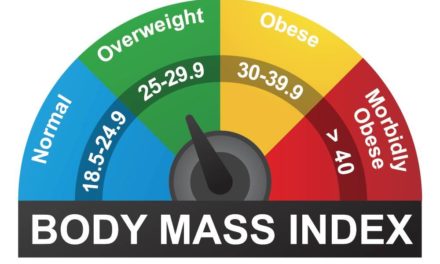When it comes to building an effective exercise program, you actually have a fair amount of flexibility regarding the specific exercises you decide to include.
For instance, if a primary goal of yours is to strengthen and tone your lower body you can use traditional squats, split squats, reverse lunges, or step us and basically accomplish the same goal.
But, whichever exercises you include in your program, to build strength, build lean muscle, and develop your body you must follow the principle of progressive overload.
The Principle of Progressive Overload
The principle of progressive overload is the foundational rule governing strength and muscular development. It states that, “In order for a muscle to grow, strength to be gained, and performance to increase, your muscles must be forced to adapt to a level of stress, tension, and intensity that is above and beyond what they have previously experienced.”
To translate that into English, what the principle of progressive overload is saying is that to build strength and lean muscle you must continuously increase the difficulty of your exercises until you have achieved the look and physical capabilities you desire.
How to Follow The Principle of Progressive Overload
To increase the difficulty of a given exercise you basically have one of two options.
1. Add more weight to that exercise.
2. Do more repetitions of that exercise.
Either way you are forcing your muscles to handle more stress than they have before, in turn forcing them to adapt, build more lean muscle, and get stronger.
To illustrate this point, again lets say one of your primary fitness goals is to build strength and tone throughout your lower body.
If you squat on a regular basis and consistently do three sets of ten repetitions while holding a thirty pound weight, if you want to see any new development in your legs you must either increase the weight (to lets say thirty-five pounds) or increase the number of repetitions (to lets say twelve repetitions per set.)
Next, once your legs have adapted to the new weight or repetition scheme if your legs are still not as strong or toned as you would like you’ll need to either add more weight or increase the repetitions again.
Finally, you’ll need to continue this process until your legs (or whatever muscle group you are trying to develop) reach the aesthetic shape or strength level you desire.
So for this example while you may have started by doing three sets of ten repetitions holding a thirty pound weight, you may need to progress as far as three sets of fifteen repetitions holding a seventy pound weight before you achieve your goals. (Or you may have to push much further than that.)
The Impact of Not Following The Principle of Progressive Overload
What is the impact of failing to adhere to the principle of progressive overload?
1. You will not build strength.
2. You will not build lean muscle.
3. Your physique will not develop.
You will maintain the progress you have made up to that point, (which is very important) but you won’t make any new progress.
And since we know your objective is to progress… that is a total bummer!
Why You Might Not Be Following The Principle of Progressive Overload
Here at ZLM Personal Training we have found that failing to follow the principle of progressive overload is one of the most common reasons people don’t achieve their fitness goals.
- For some people it is because they go to the gym and do the same workouts with the same weights and same number of repetitions basically every workout.
- For some people it is because they rely exclusively on group fitness classes that use the same bars or dumbbells for every class. (Even worse these bars often never even exceed ten pounds. Ten pounds is lighter than most two-month-old babies!)
- And many women don’t follow the principle of progressive overload because they are afraid of lifting heavier weights because they are afraid of getting too big and bulky. (Ladies, we promise, unless you are naturally extremely muscular, lifting progressively heavier weights is only going to make your more toned, not overly big and bulky.)
In Summary
Whichever exercises you decide to include in your program, to build an effective exercise program and achieve your fitness goals you must follow the principle of progressive overload.
To build strength, lean muscle, and develop your physique you must gradually add more weight or add more repetitions to the exercises you are using.
If you don’t, even if you are putting in long hours in the gym working your absolute butt off, you will not progress and your body will not develop past the point it has already reached.
Your exercise and dietary coaching team.
Zach Moore Training.
And everyone, if you found today’s article insightful, inspiring or enlightening and you have a friend, family member, colleague or peer who you think would benefit from what we’ve talked about here today, pass this email on.
One of the best things you can do for those you care about is help them build a healthy and great looking body. A body that is strong, capable and moves without pain and a body in which they feel confident and happy.





